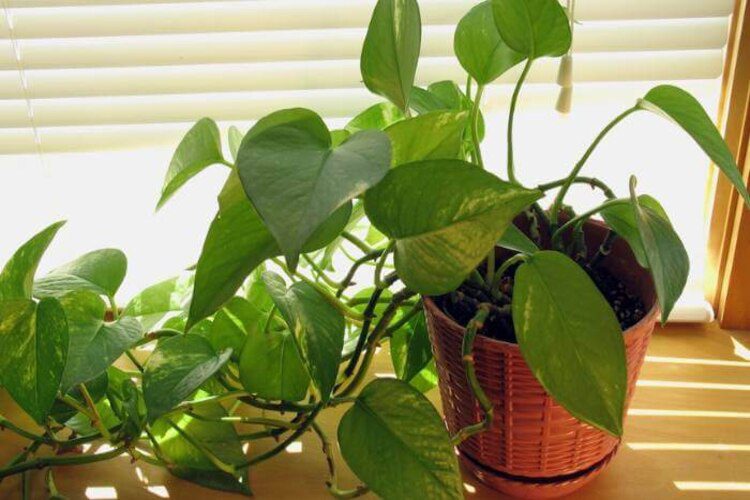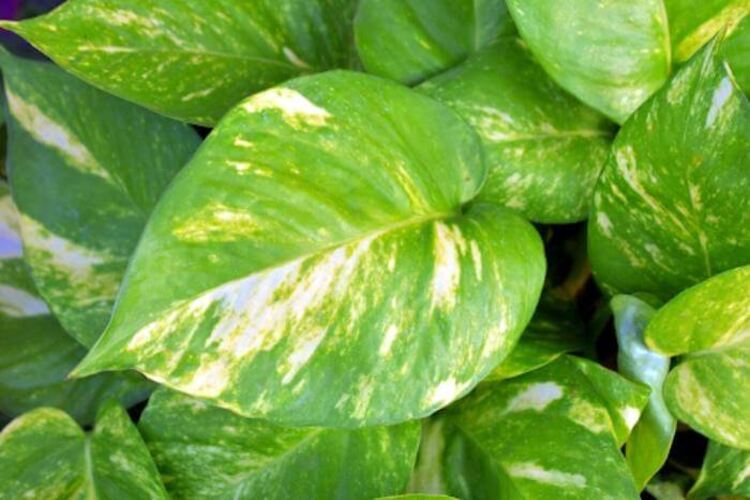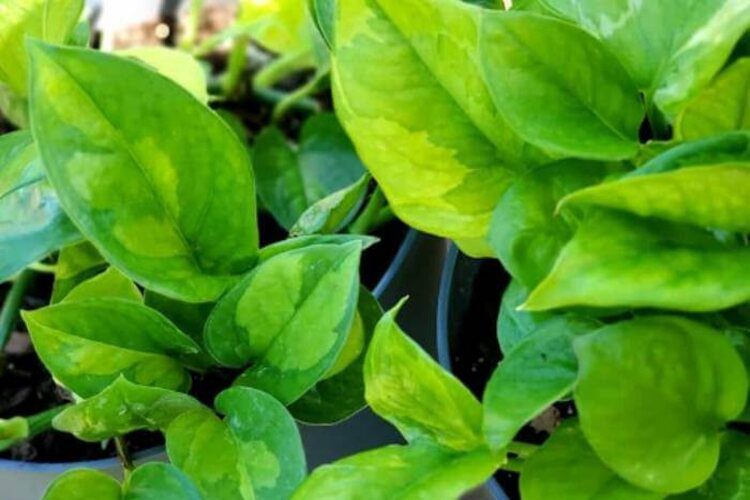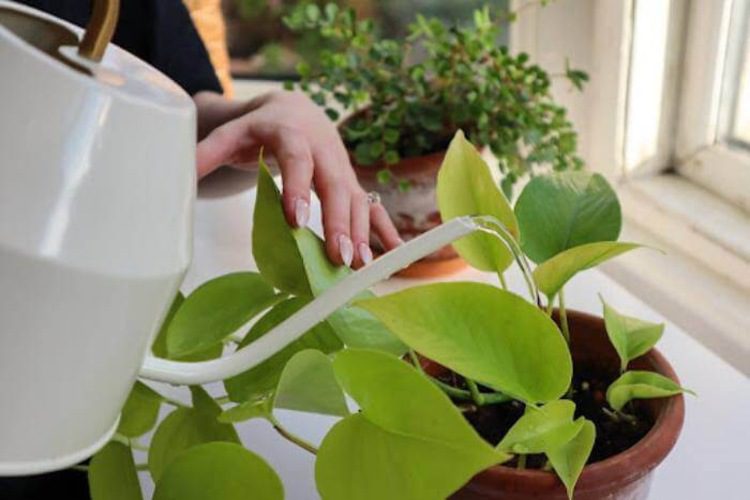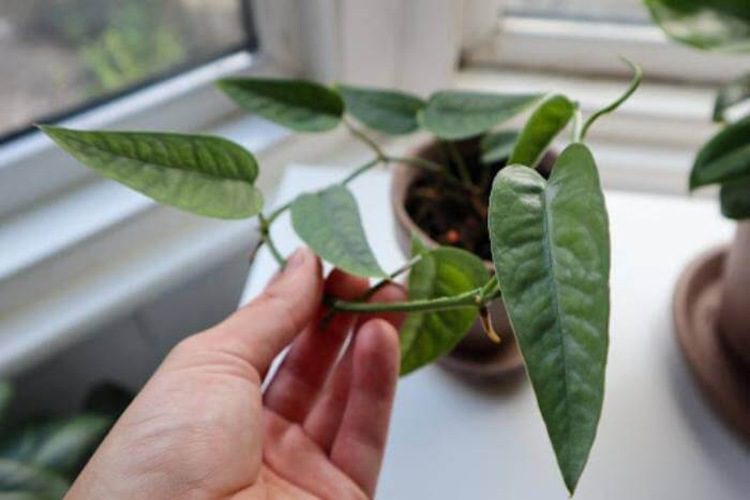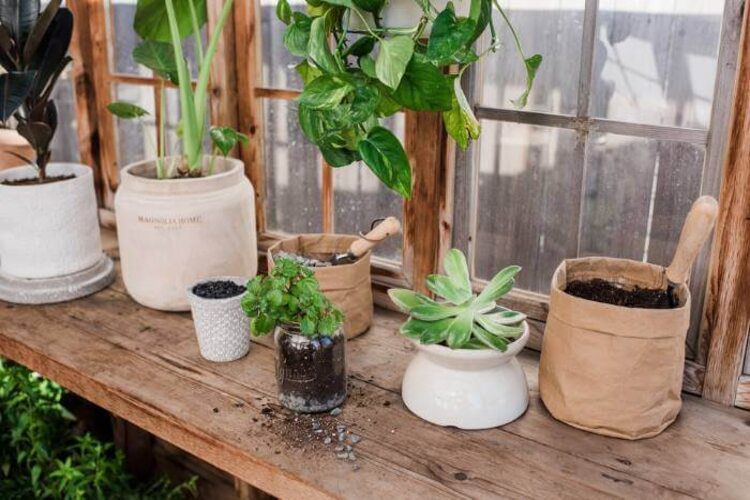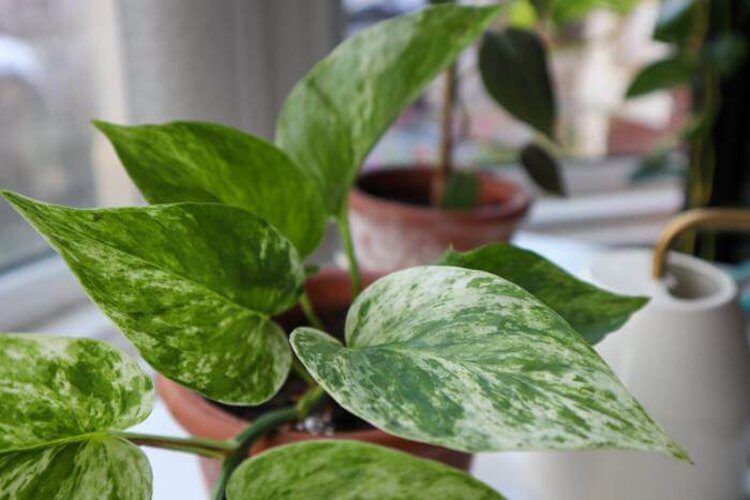How Much Light Does Pothos Need? (Exactly Amount)
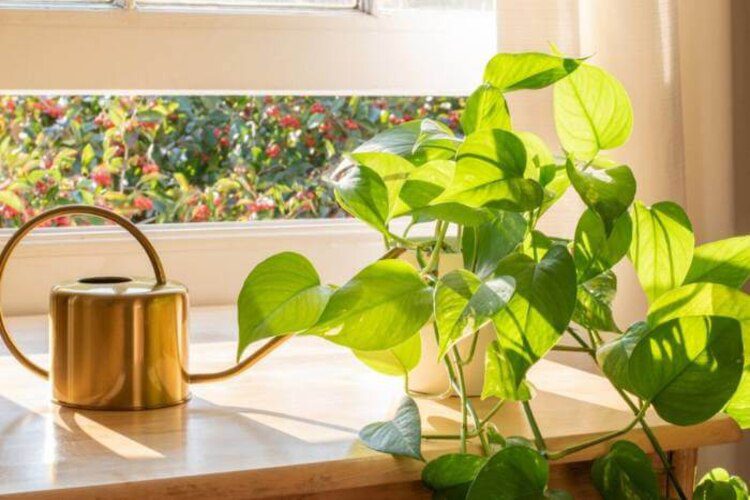
Gardening can be tricky, and knowing each plant’s sunlight needs is key to success. Different plants desire different levels of exposure; some love basking in the sun all day, while others prefer more tranquil shadows for their growth. Knowing how much light your greenery requires will keep it healthy and blooming.
How much light does Pothos need? Here is what I can tell you about the pothos plant and the ideal amount of sunlight for it.
How Much Light Is Ideal For Pothos?
A plant’s life is heavily dependent on the presence of light. It supplies them with a vital source of energy for growth, enabling them to bloom and reproduce.
Photosynthesis allows plants to convert incoming rays into carbohydrates (energy), which fuels their very existence; without this crucial process, they would quickly perish in darkness. With its eye-catching leaves and long trailing vines, Pothos is the perfect plant to add a splash of life to any room.
But while this hardy species can still survive quite happily in low-light conditions, careful control over how much Pothos drainage and light your beloved foliage receives could be key for it to truly flourish.
Pothos plants thrive best when allowed to bask in the gentle, golden rays of a sunrise or sunset. Position them near an east-facing window for around 12–14 hours daily and protect them from the strong midday sun—unless you want your leaves turning a crispy shade of bleach. If basking in the sun’s rays is more their speed, opt for a cozy spot near an east-facing window or door with limited time outdoors—no longer than 3–4 hours daily. Too much direct light will cause leaves to bleach and burn out over time.
How Are Pothos Affected By Light?
Too little or too much light can cause stress, resulting in wilting and discolouration. But how will you know if your beloved plant companion isn’t getting the perfect amount of illumination?
Check out an issue with lighting levels, plus some simple hints to ensure that those lush green leaves stay healthy.
Getting Too Much Light
Wilting
Your pothos may be suffering from too much bright sunlight during the hottest part of the day, which can cause its leaves to become weak and wilted. Keep an eye out for symptoms in your plant between noon and 4 p.m.!
Pothos Leaves Curling
When the sun shines brightly, your pothos leaves bask in its glory, flat and open towards its magical warmth. However, if you notice them stretching or curling away from the light source, this is a sure sign of overexposure!
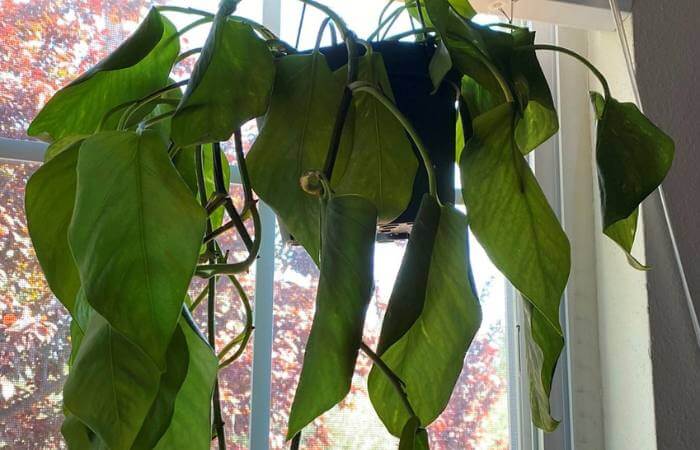
Brown Leaf Edges or Tips
Pothos plants are vulnerable to a range of maladies, with excessive light being one of the possible causes behind brown tips and edges. Other potential culprits include root rot, salt accumulation in the soil, low temperatures or dry conditions caused by inadequate watering regimes, as well as an overabundance of fertilizer.
Brown Spots
Too much bright light can cause your pothos’ leaves to develop unwanted brown spots. At first, these blemishes may appear small and pale in color but eventually, grow into large blotches if left untreated.
Yellowing and Thickening of New Growth
Wilting leaves, brown spots, and bleached-out foliage; are all symptoms of a common problem: yellowing. This typically occurs when the plant is exposed to extreme heat, which can cause it to burn or scorch. On the other hand, new growth may become thicker as an effect of this issue.
Excessively Compact and Stunted Growth
If your pothos plant gets too much exposure to the sun, it may experience shock and be unable to photosynthesize, leading to stunted growth and a compact appearance.
Isn’t Getting Enough Light
Extended Internodes or Leggy Growth
When your pothos isn’t receiving enough natural light, its foliage may be sparse and its growth lanky, as if it’s desperately “reaching” for additional sunlight. Stems will extend further apart with longer internodes, leading to an overall scruffy appearance rather than the lush look you expect from this popular houseplant.
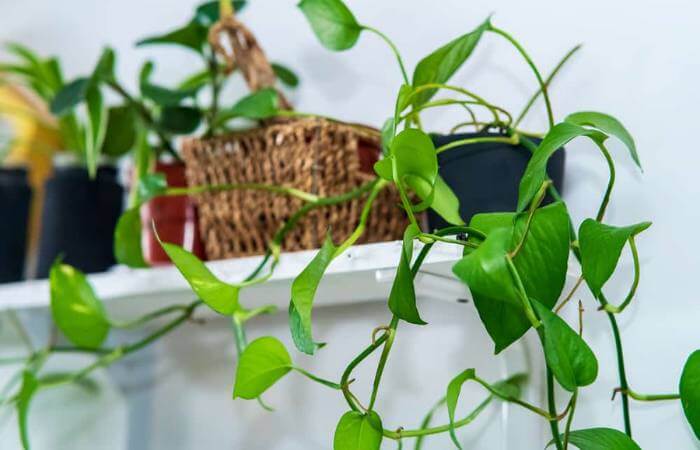
Leaning Towards Light Sources
Your pothos plant will show its intelligence by turning towards the brightest light source in your home—like a beacon of hope for thriving! Its leaves become little solar panels, trapping as much energy from the sun or artificial lighting as they can to survive. This leads to a visual effect: one side remains vibrant with lush foliage while the other begins fading away into wilting leaves with no sign of life.
Producing Small Leaves
Your pothos need light to stay healthy and vigorous! Photosynthesis and transpiration – these processes make up a plant’s lifeblood. Without adequate lighting, your green friend won’t be able to produce ample foliage, so you’ll end up with stunted leaves rather than the lusciously full ones it deserves. On top of that? Its internodes will become longer as if stretching for more light from the sun!
No New Growth
While pothos plants can live in very low light, they will not thrive unless given the right amount of sunlight. If your plant isn’t getting enough sun, you may find it languishing for days or weeks – so if a lush and vibrant garden is what you’re after, don’t forget to give your plants just the right blend of natural daylight.
Abnormal Leaf Color
Pothos’ showy foliage runs the risk of becoming discoloured when exposed to low light. Variegated patterns in hues of white, gold, or pink may fade and give way to yellow spots and watery brown blotches.
Browning Leaves And Tips
When exposed to inadequate light, pothos can start exhibiting brown tips or leaves with a yellow halo around the patches—an unfortunate side-effect of its lack of illumination.
Leaves Dropping
Pothos plants, just like us humans, can become stressed when not receiving enough love and attention. When feeling overwhelmed by too little light, a Pothos will sacrifice some of its foliage to conserve energy for the rest, reducing its overall “load” so it may thrive with fewer resources.
How To Improve Lighting Conditions For Pothos?
Pothos can thrive when bathed in a mix of natural, medium, and artificial light, making it possible for even those with shady spaces to have lush green plants.
Put Them Closer to a Window or Door
If you want your pothos to flourish, positioning it in the most optimal spot will be key. An east-facing window is best for direct morning light that’s gentle yet still provides plenty of brightness and indirect sunlight throughout the day—perfect conditions for this plant. Your plant also gets cozy with south-facing windows. Situate them a few feet away to give just the right amount of light for healthy plant growth.
Giving it a home in the hub of your living space is also an ideal location. It will benefit from plenty of bright indirect light and be able to share its beauty throughout every room. Humidity is also important to consider when placing your Pothos. If you live in a dry climate, you may need to mist your plant regularly or place it in a pebble tray with water.
Get a Grow Light
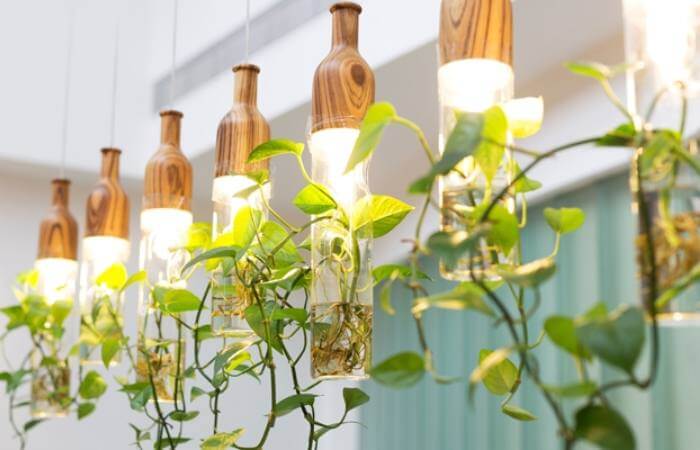
Provide an artificial lifeline if your home doesn’t get enough natural sunlight. Opt for some high-quality lighting to ensure that all of your pothos plants are getting their daily dose and staying strong. Keep your pothos plants luminous and healthy by giving them the perfect amount of sunshine—12–14 hours a day. Set up an automatic timer to make sure they are getting their recommended dose for optimal growth. With this 24/7 illumination from grow lights, you’ll be able to give your green friends all that they need for successful transplantation.
For optimal results, position your grow lights around 6–12 inches above the ground and increase the exposure time to between 16–18 hours. This will help encourage stunning flowers throughout this foliage plant’s vibrant leaves. A perfect imitation of the sun’s rays, these full-spectrum LED grow lights provide plants with much-needed white, blue, and red light. With artificial lighting, plants can thrive without the risk of sunburn or unpredictable weather. Full-spectrum grow lights provide all that your green friends need to flourish safely indoors.
Conclusion
In conclusion, while it’s challenging to pinpoint the exact amount of light that pothos plants need, a general guideline is to provide them with moderate to bright, indirect light.
Remember that finding the right balance is key – too much direct sunlight can scorch their leaves, while too little light might lead to stunted growth. Observing your pothos’s response to its current light environment and adjusting accordingly will help you ensure its health and vibrancy over time.
FAQs


